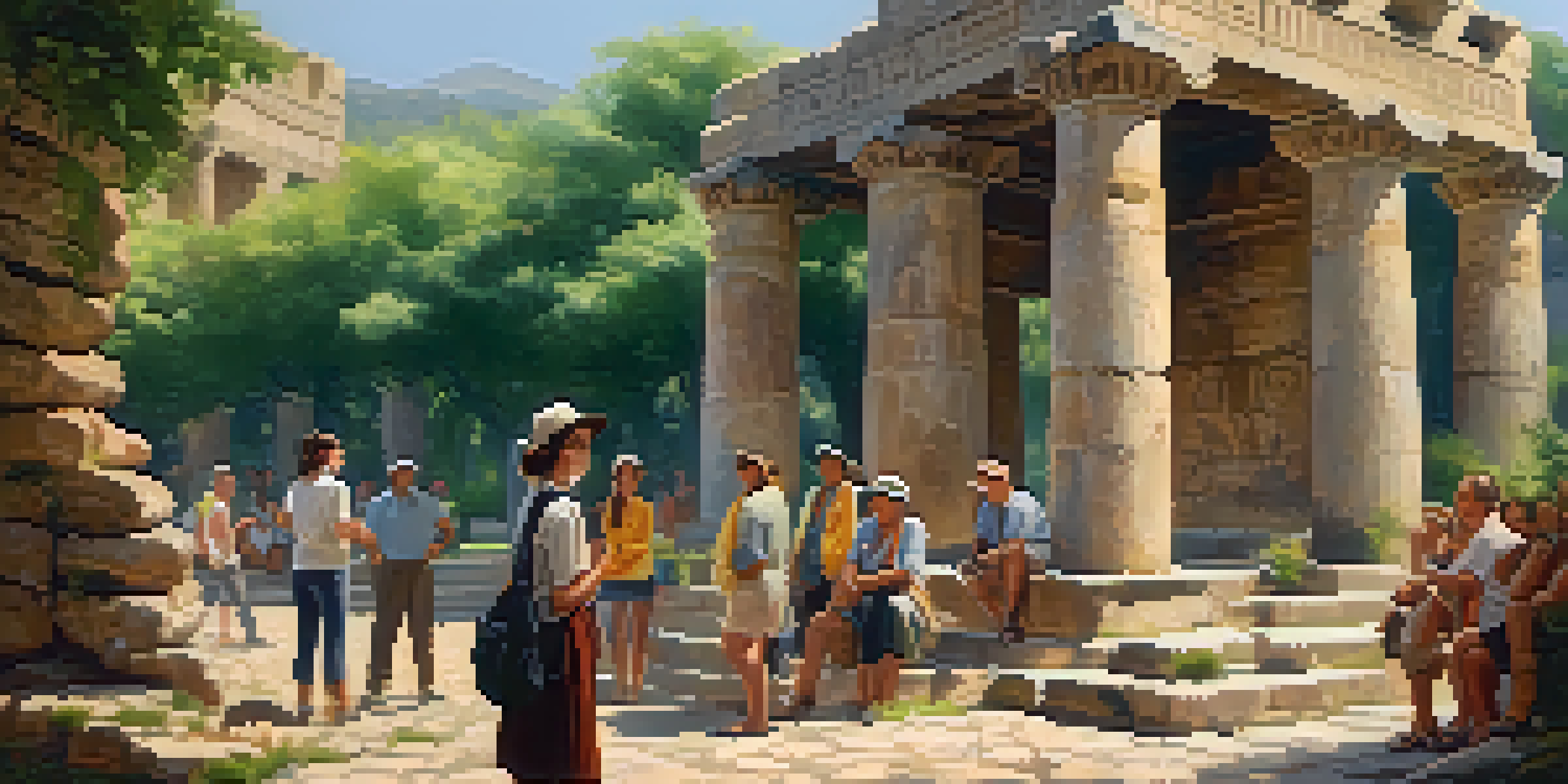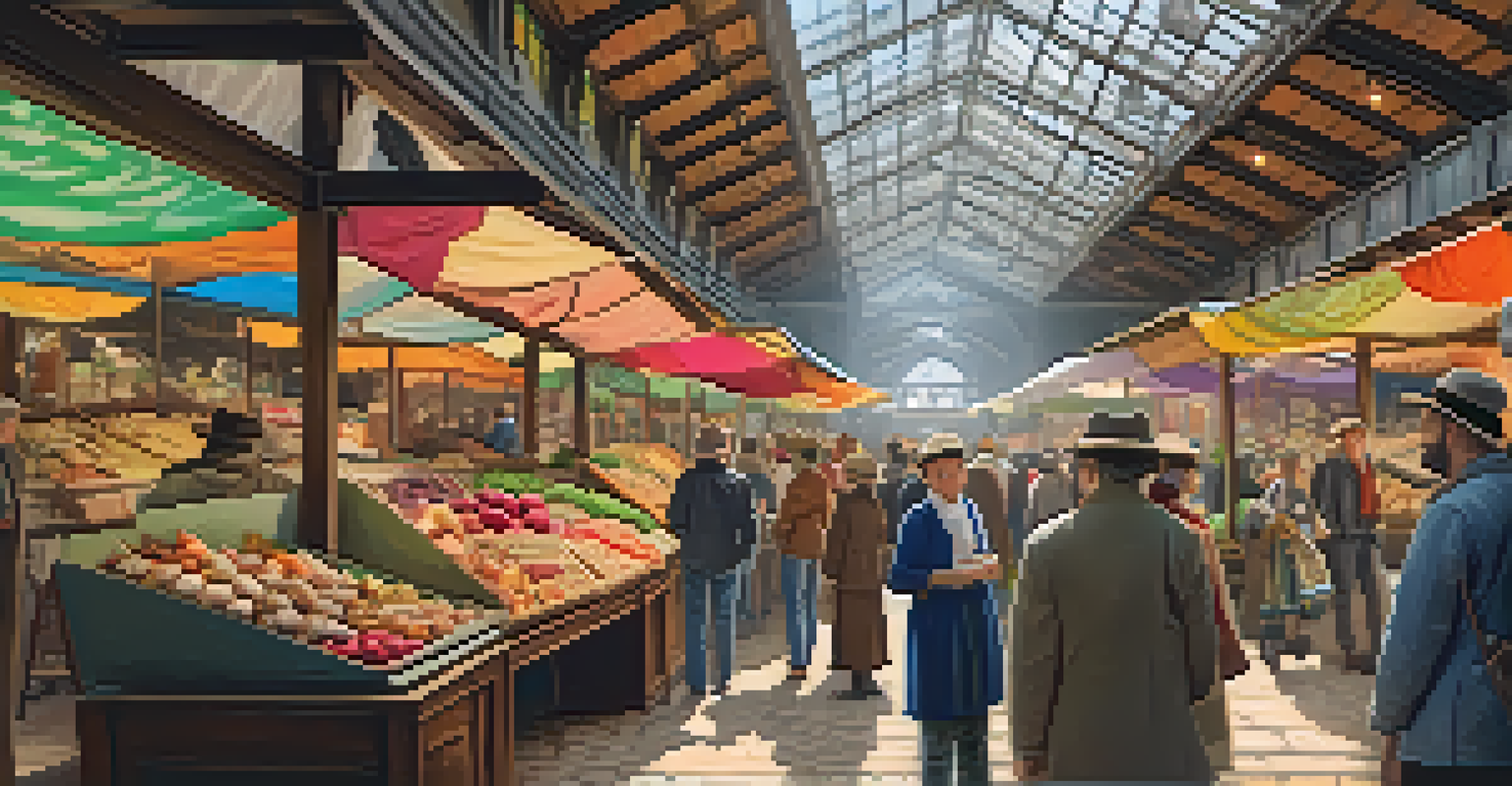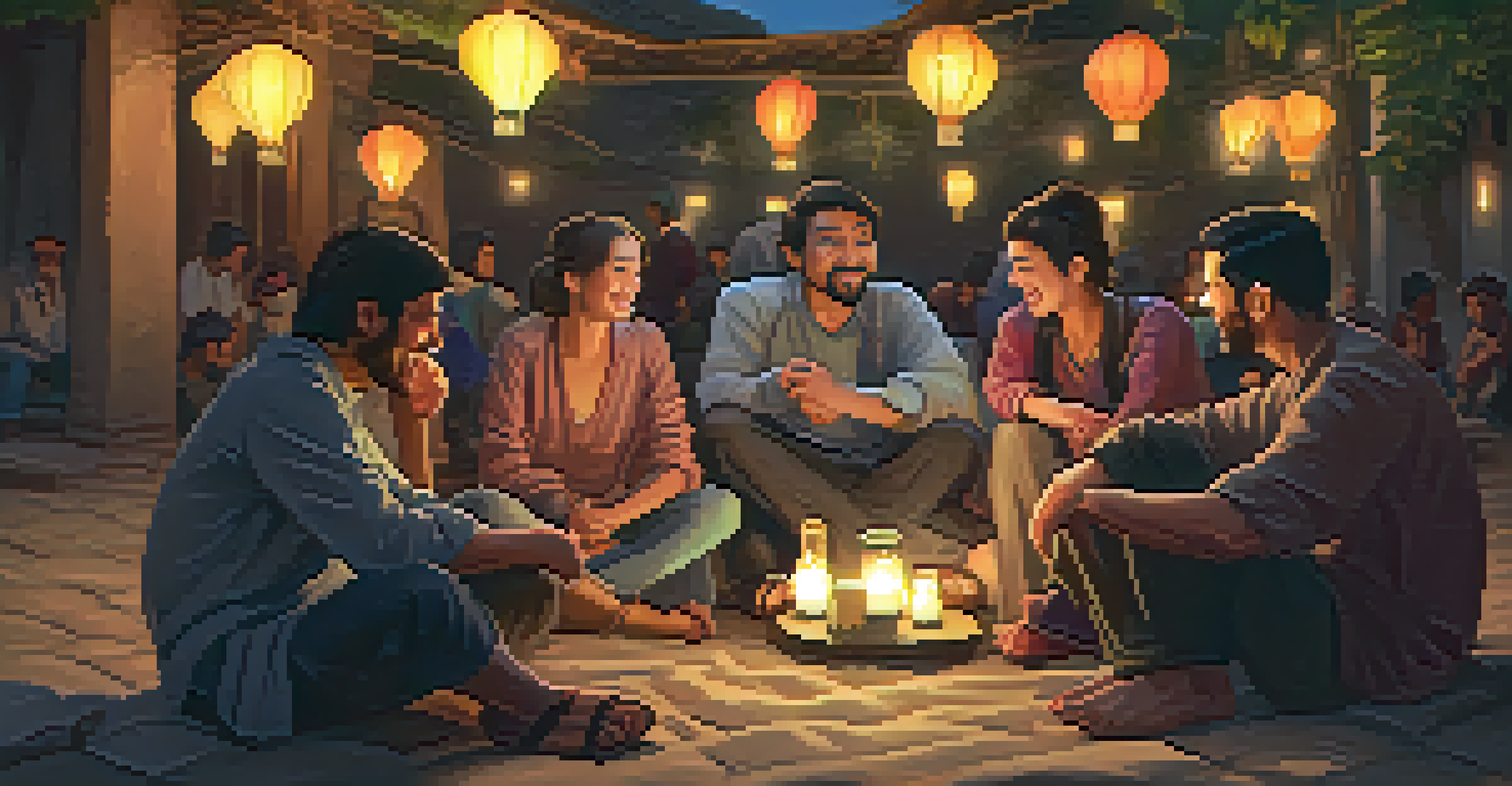How Storytelling Enhances Tours: A Journey Through History

The Power of Storytelling in Tours
Storytelling is a powerful tool that can transform an ordinary tour into an extraordinary experience. It allows guides to weave narratives that engage the imagination and emotions of their audience. When history is presented as a story, it becomes relatable and memorable, allowing participants to connect deeply with the past.
Storytelling is the most powerful way to put ideas into the world today.
Imagine walking through ancient ruins while a guide shares tales of the people who once lived there; suddenly, the stones feel alive with history. This narrative approach not only captivates but also helps tourists understand the significance of what they’re seeing. When facts and figures are framed in a story, they resonate more with the audience.
Moreover, storytelling can evoke empathy and curiosity, driving people to explore further. By humanizing historical events through personal anecdotes, guides can make the past feel relevant to today’s world, encouraging travelers to engage more fully with their surroundings.
Creating Emotional Connections through History
One of the most remarkable aspects of storytelling is its ability to create emotional connections. When guides share personal stories or historical anecdotes, it builds a bridge between the audience and the subject matter. This emotional investment can make the experience more impactful and lasting.

For instance, recounting the struggles of a historical figure can evoke compassion and understanding among listeners. By relating these stories to modern-day challenges, tourists can see the relevance of history in their own lives. This connection transforms mere observation into genuine reflection.
Storytelling Enhances Tour Experience
Storytelling transforms ordinary tours into engaging experiences by connecting history with the audience's emotions.
As a result, tourists are more likely to remember not just the facts, but also the feelings associated with the stories. This emotional resonance can turn a simple tour into a profound journey of discovery, fostering a deeper appreciation for history.
Engaging Different Learning Styles with Stories
People have different learning styles, and storytelling accommodates these diverse preferences beautifully. Visual learners benefit from vivid descriptions, while auditory learners engage with spoken narratives. Kinetic learners can even imagine themselves in the story, enhancing their overall experience.
History is a story that is still being told.
For example, a guide might describe a battle scene with dramatic flair, helping visual learners picture the chaos and bravery involved. At the same time, the rhythm and cadence of the storytelling can captivate auditory learners. This blend makes the tour accessible and enjoyable for everyone, regardless of how they learn best.
By incorporating storytelling into tours, guides can cater to a wider audience, ensuring that each participant leaves with a personal connection to the history shared. This inclusive approach not only enhances the experience but also fosters a love for learning.
Building a Sense of Community Among Tourists
Storytelling can create a sense of community among tourists, making them feel part of something larger than themselves. When stories are shared, they invite audience interaction and foster discussions. This engagement breaks the ice and helps participants bond over shared interests and experiences.
During a tour, for example, when visitors are encouraged to share their thoughts or related experiences, it enriches the storytelling experience. This interaction can lead to laughter, questions, and even friendships formed over shared stories. The result is a warm and inviting atmosphere where everyone feels included.
Fosters Emotional Connections
Sharing personal anecdotes and historical stories creates emotional bonds that deepen tourists' appreciation for history.
As connections deepen, the overall tour becomes more than just a series of historical facts; it evolves into a shared journey of exploration. This sense of community enhances enjoyment and leaves a lasting impression long after the tour has ended.
Immersive Experiences: Taking Tours to the Next Level
Incorporating storytelling into tours can transform them into immersive experiences. Guides can use props, visuals, and even sounds to enhance their narratives, allowing tourists to engage all their senses. This level of immersion makes the stories come alive and stick in the minds of participants.
Imagine standing in a historic site, hearing the sounds of a bustling market, and seeing artifacts that tell a story. This multisensory approach helps participants feel as if they’ve stepped back in time. It fosters a deeper understanding of the context and significance of the location.
Such immersive storytelling not only enriches the experience but also encourages tourists to explore and ask questions. By inviting them to engage with their surroundings, guides can cultivate a sense of curiosity that extends beyond the tour itself.
Preserving History Through Engaging Narratives
Storytelling plays a crucial role in preserving history for future generations. By presenting historical events in relatable ways, guides can keep these stories alive in the minds of tourists. This preservation is vital, as it ensures that important lessons from the past are not forgotten.
For instance, when a guide shares the story of a significant event, such as a local uprising or celebration, it becomes part of the collective memory of those who hear it. This shared knowledge can inspire people to appreciate their heritage and understand the struggles that shaped their present.
Immersive Techniques Engage All Learners
Incorporating multisensory elements in storytelling caters to different learning styles, making tours accessible and enjoyable for everyone.
Moreover, storytelling encourages tourists to share these stories with others, amplifying their reach. As they recount what they’ve learned, they contribute to the ongoing dialogue about history, ensuring that it remains vibrant and relevant.
The Future of Tours: Embracing Storytelling
As the tourism industry evolves, storytelling is becoming an increasingly essential element of captivating tours. With the rise of technology, there are now more opportunities to integrate storytelling into tours through virtual experiences and interactive apps. These advancements can enhance storytelling and reach wider audiences.
For example, augmented reality can bring historical tales to life, allowing tourists to see events unfold right before their eyes. This innovative approach can make history even more engaging, appealing to a tech-savvy generation. It’s a perfect blend of tradition and modernity.

Ultimately, embracing storytelling in tours not only enriches the visitor experience but also keeps history alive. As guides adapt to new technologies while maintaining the heart of storytelling, the future of tours promises to be more engaging, educational, and enjoyable.